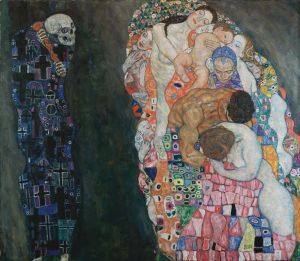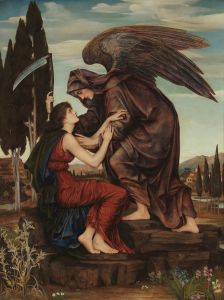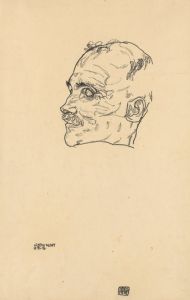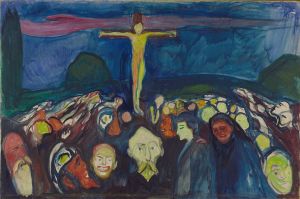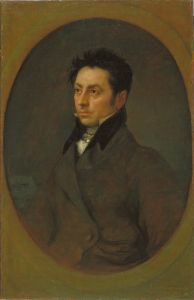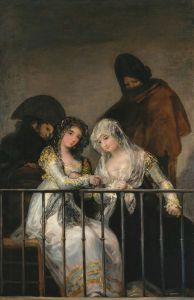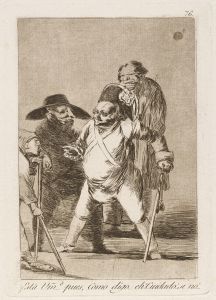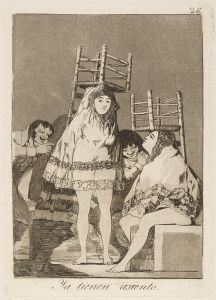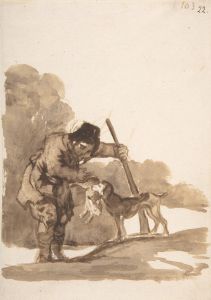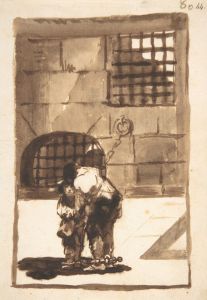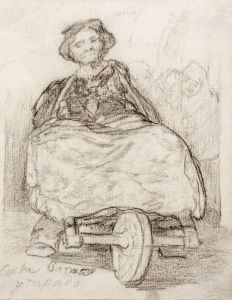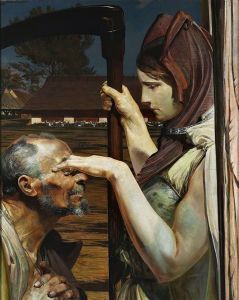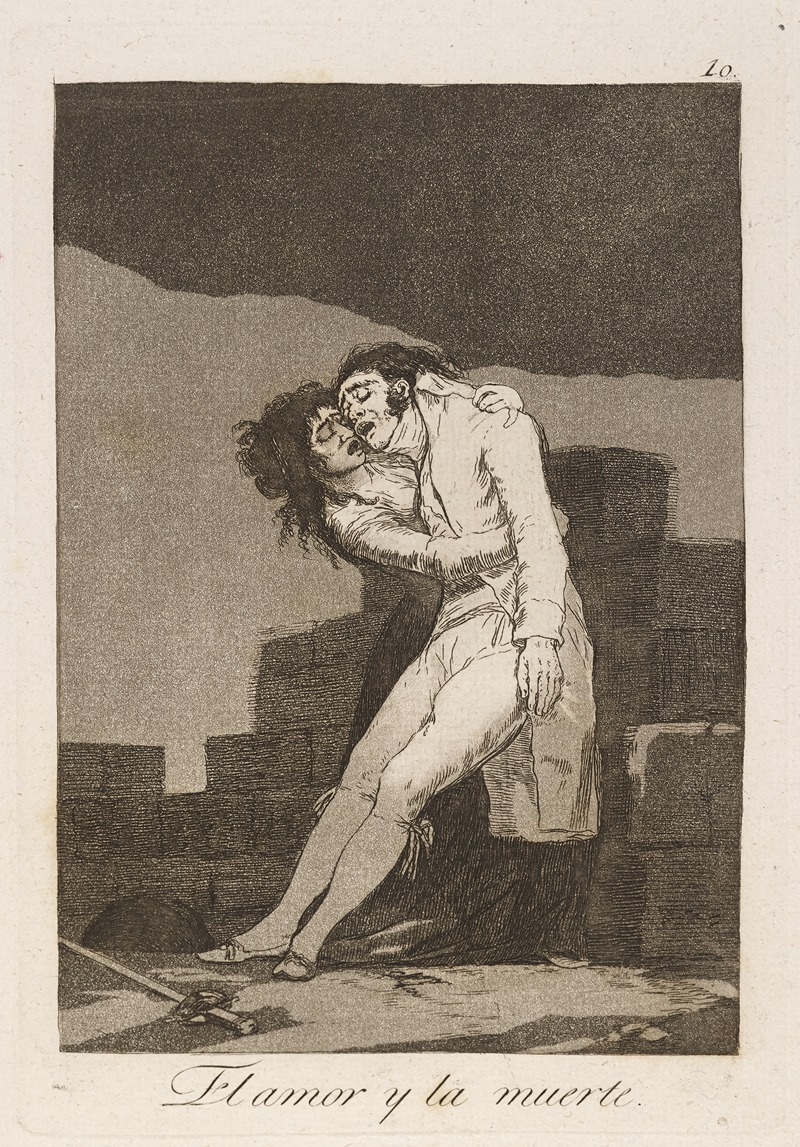
El amor y la muerte.
A hand-painted replica of Francisco de Goya’s masterpiece El amor y la muerte., meticulously crafted by professional artists to capture the true essence of the original. Each piece is created with museum-quality canvas and rare mineral pigments, carefully painted by experienced artists with delicate brushstrokes and rich, layered colors to perfectly recreate the texture of the original artwork. Unlike machine-printed reproductions, this hand-painted version brings the painting to life, infused with the artist’s emotions and skill in every stroke. Whether for personal collection or home decoration, it instantly elevates the artistic atmosphere of any space.
Francisco de Goya, one of Spain's most renowned painters, created a series of works that delve into the complexities of human emotion and experience. Among these works is "El amor y la muerte" (Love and Death), which is part of his series of prints known as "Los Caprichos." This series, created between 1797 and 1798, consists of 80 prints that critique the social, political, and religious structures of Goya's time. "El amor y la muerte" is one of these prints, and it reflects Goya's interest in exploring the darker aspects of human nature and the inevitable intersection of love and mortality.
"El amor y la muerte" depicts a dramatic scene where a man, seemingly wounded, collapses into the arms of a woman. The woman's expression is one of despair and anguish, capturing the intense emotional weight of the moment. The composition is stark, with strong contrasts between light and shadow, a technique Goya often employed to heighten the emotional impact of his work. This print, like many in the "Los Caprichos" series, is executed in aquatint and etching, allowing Goya to achieve a wide range of tonal effects and intricate details.
Goya's "Los Caprichos" series was groundbreaking for its time, as it used art to comment on the follies and vices of society. "El amor y la muerte" can be interpreted as a commentary on the transient nature of life and the inevitable presence of death, even in moments of love and passion. The themes of love and death are universal, and Goya's depiction resonates with the viewer's understanding of the fragility of human existence.
The "Los Caprichos" series was initially published in 1799, but Goya withdrew it from public sale shortly after its release, likely due to pressure from the Inquisition and the controversial nature of its content. Despite this, the series has been highly influential and is considered a precursor to modern art movements that explore the subconscious and the darker aspects of human experience.
Goya's work, including "El amor y la muerte," is characterized by its emotional depth and technical mastery. His ability to convey complex themes through powerful imagery has cemented his place as a pivotal figure in the transition from the Old Masters to modern art. Today, "Los Caprichos" and "El amor y la muerte" are celebrated for their innovative approach to printmaking and their enduring relevance in the exploration of human nature.
In summary, Francisco de Goya's "El amor y la muerte" is a poignant exploration of the intersection between love and death, rendered with technical skill and emotional intensity. It remains a significant work within the "Los Caprichos" series and continues to be studied for its artistic and historical significance.





